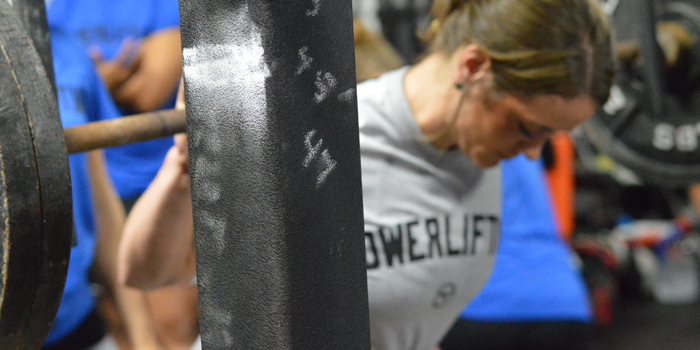
Top-5 Article in September of 2015
I have one tattoo. I take it seriously because it’s something that I’ll have forever. It’s a Hebrew phrase on my ankle that has to do with healing, walking through pain with people day after day, through the messy places, to see them end up somewhere better.
As a physical therapist, there’s so much relevance in that concept. As a competitive powerlifter, the degree to which the idea of healing, wholeness, and health comes alive becomes even more vibrant; there is no time I’m more alive than when I have weight on my back, or when I see a friend who has given their body day in and day out succeed at what they worked towards. Looking at a loaded bar at a meet, something hard that might feel a bit risky, a third attempt you’re not sure is going to happen, and moving it is an incredible feeling. I get chills just writing about it.
RECENT: Movement Patterns Beyond One Plane
I honestly cannot believe I get to be a part of that with people; ensuring that people feel their best physically and supported or cared for in every way is something I feel I am put on this planet to do, and that sense of purpose drives how I allocate my time and energy.
Yet as a new graduate even from a highly revered school, the more exposure I get to material, the more I realize how much I don’t know. It can be paralyzing at times. Yes, I have a knowledge base that extends beyond most when it comes to what we “do.” But as much as I know “a lot,” what I don’t know far outweighs what I do. You see, what a lot of people don’t realize is that physical therapy school prepares us to be generalized practitioners in a variety of settings. We get more medical background than we do specialized biomechanics.
I know a lot about different components to assistive devices (that’s a fancy term for wheelchairs; you wouldn’t believe how in-depth things can get in designing a chair for someone with severe injury), stroke rehabilitation, and cardiac rehab, and that legitimately changes people’s lives. But advanced biomechanics and the change under load? That changes lives too. It changed mine, but did I really learn much about that while I was earning my doctorate? No. For me, it feels there is very rarely ever “enough.” I’ve been so blessed and fortunate to meet some incredibly intelligent people in the strength and conditioning community, and that is where I have acquired my foundations.
And at the same time, as soon as people hear “DPT,” there’s an expectation that I’ll know how to heal people. There’s an expectation that I’ll walk into that messy place of a shoulder or hip issue and magically know exactly how to fix it and give people their squat or bench back. That’s a lot to take on, because I know how much training means to me, personally. If you ask me for help, I take that incredibly seriously.
RELATED My First Trip to elitefts and Talking with Dave Tate
The truth is, I missed the injuries and poor mechanics in myself. I mentioned in my first article how much it meant to hear Harry Selkow and Bob Youngs speak to the fact that experience of working through imbalances, injuries, and pain while continuing to train often times is the most growing experience as a clinician. More recently, Harry encouraged me in my practical lab work. I’ve been dealing with a hip injury for roughly a year and a half now. It started with a heavy deadlift that prevented me from participating in intramural flag football with my PT classmates. Walking into a lecture of 65 PT students the next morning with a significant limp puts you under a bit of a microscope. It doesn’t help that I dropped my coffee on the way in and couldn’t bend over to clean up the spill. Thank you, Chelsea, for making things so much less awkward than they could have been.
As a future PT, I didn’t want to admit that I didn’t know how to fix my injuries. I don’t like failure, and I didn’t want to admit that I actually needed time off because training was the most life-giving experience I had at the time. I went to a few traditional therapists, followed protocols that I probably could have come up with on my own even before starting school having a few years of full-time work experience under my belt, and nothing improved. I was so determined to figure out what was wrong, why it was wrong, and how to correct it, because as a provider I didn’t want to somehow admit failure. So…I kept training. Actually, the only thing that helped on a day-to-day level was continuing to strength train.
What I developed in the meantime was what could be called incredibly dysfunctional strength. With all the training that I’d done in the presence of pathology (essentially, compromised joint integrity), I became so strong in asymmetrical patterns that I couldn’t actually pull myself “into” symmetry.
This felt totally symmetrical to me, and is the result of neglecting injuries in a desire to be short-term “more competitive.”
When I look back at my training a year and a half later, almost two actually, there are a few things that stand out. As a clinician, I now keep these things high on my radar for athletes I work with. None of this is groundbreaking. They’re very easy, basic concepts, but are easy to neglect in the short term, especially when you’re in the midst of your training. Ultimately, our short-term becomes habit, and becomes long term. As an athlete and PT both, I bring these up with a level of conviction and urgency that I hope comes across.
1. Unilateral Work
I was in grad school. I had limited time. I wanted to get in and do what I needed to do to get the MOST out of my time in the gym, and my coach at the time did very little of this. Plus, my ego got the best of me; I loved squatting more than the college bro in the rack next to me. Stupid.
Looking back at my training log, there was absolutely no unilateral work done. Ever. Which means that all the time I spent under the bar (which was a lot), all I did was reinforce asymmetrical patterning secondary to injury and weakness. Our body never really does the exact same thing twice, but we DO learn patterns relatively quickly. As I continued to get stronger without supplementing strength unilaterally on the injured side, all it did was put me further into compensatory patterns because my injured side continued to lag. To move the bar, my body accessed whatever pattern it could to help me stand up. Yes, it let me “train through the injury,” but now my left side lags so badly behind my right that it prohibits me from really getting more weight on the bar in meets. There are multiple ways to approach unilateral work to bring up lagging parts, but the best way is to start now, like today, in implementing very basic exercises.
2. Rest
I think the bigger picture here is examining why you train. For me at the time, it was an escape. I kept training through the injury because taking time off meant actually staring down a few demons I didn’t have the energy to. It was easier to hurt physically and keep training than it was to take time off and heal. There have been articles written about this at length, but it’s something I feel fairly passionate about because I firmly believe in NOT beating ourselves up physically as a reciprocal to whatever else is going on in our lives.
We have one body; if I’m here as an ambassador to healing and walking that process, I would be remiss to leave this point out. Are you really training to get stronger? If you are, chances are you’re wrecking your body pretty consistently. Are you resting as consistently? The repair that happens on a tissue level while we are sleeping, or even just taking time away from destroying muscles is absolutely astounding. The body really is an amazing thing.
3. Motor Patterning
There is so much happening with our bodies as we move. We think about a squat, or a bench press, or a even a deadlift as relatively straightforward in terms of what they look like (we’re sitting down, and standing up, compared to say, rotational dance choreography), but also as technical movements to be executed correctly. What we don't talk about are all the small muscles working together; we’re not just picking a bar up off the floor. Stabilizers are involved throughout the entire body. Anything goes wrong, the bar rolls forward, and suddenly there’s a rotation involved, which means anti-rotation muscles need to engage. Your one plane movement has now become multi-planar.
In a large part of our movement even on a small, nearly minute scale, we function and operate in three planes of motion. Very seldom are our functional movements only one-plane motions. Coordination across three planes of motions, with weight, goes far beyond my knowledge base as of now. Motor control really is it’s own subspecialty, and one that I hope to learn more about. Where I’m going with this: just because our hip is extending doesn’t necessarily mean our glutes are engaged when and where we need them to be.
What I had neglected in my own development of imbalances was the idea of neuromuscular activation, and balance across co-contracting muscles that work together. The more we pattern into dominance of one muscle group, the more patterned and predisposed we become to over-utilization of one group and underutilization of another. Essentially, this is all about balance of chains of muscles. I trained so quad dominantly to take me out of an injured glute that it has taken me weeks of simple retraining exercises to even isolate my glute while lying down. If I were to go back and pick ONE thing to emphasize to my former self, this would be it.
Train opposite muscle groups, above and below the joints of interest. Train them for strength, but don’t neglect higher rep ranges.
4. Communicate With Your Coach
This should be intuitive, but it needs to be said that:
A) You should never, ever feel as though you’re letting your coach down by taking time off or making adjustments to account for injury. This is about YOU, your enjoyment, and fulfilling a part of your life, working towards your goals. Any good coach will recognize and support that. This is not, however, freedom to sandbag training sessions and then wonder why you aren’t progressing. I say this partially because I know firsthand how it feels to be so wrapped up in not wanting to let someone down that you and your health becomes the casualty.
B) Your coach should be the first to recognize limitations of his or her background and when to refer to a physician or physical therapist. If they are one of those two, it is paramount that they are willing to admit when an issue supersedes their skill level. A good coach will want the best for their athlete. I truly believe experience is an amazing teacher, but experience often times should also align itself with logic, and for the purposes of this point, science. Pretty self-explanatory there, but there’s been a bit of a trend in the community.
This is a bit of a sticky issue for me to talk about, because I believe some of the most intelligent rehabilitative specialists I’ve met are both strength coaches, as well as PT’s. It’s a murky field with a lot of overlap, and I’m squirming in my seat writing this. Actually, I kind of wish I could leave it out, but there’s truth that needs to be spoken. Generally, in my mind, in 99.9% of circumstances, listen to your coach, period. Ask questions, learn, and understand, but you have them coaching you for a reason. They may tell you to take time off. They may tell you to adapt. They may completely go back to the drawing board and come with a new plan of action.
At the same time, as someone who has academic background but is newer to the lifting community, it is mind-blowing to me how many coaches and athletes perpetuate ideas that have very little evidence or even functional anatomy to support their use. There are thousands of rehab experts available; any concept you choose, you’ll likely find some support, and some advising against it.
It can be rather confusing to figure out how to weed through this as athletes, and I’m actually considering it as another article topic. My advice here, as both an athlete and DPT, is this: Come back to foundational principles. Most of the issues we have don’t require rocket science to fix. You’d be surprised how much you can learn from focusing on the basics.
Ask yourself—does it really make sense to do this? Find a few solid people you trust and gather their thoughts, never behind your coach’s back, and take things with a grain of salt. Bigger picture: what I am advocating is open communication with your coach and perhaps another voice that you both trust, collaborative exploration of solutions, and seeking sound science rather than a fad technique.
C) Programming should be adjusted accordingly, and you, as an athlete should be ready to hear things you may want to with regards to changing volume, intensity, or emphasis. In general, be coachable. This, I’m realizing, is much easier said than done.
D) It is YOUR body.
Hear this, please. You have one body your whole life. One body. Take care of it. You should consider yourself so, so fortunate to even have the ability to do what you do, regardless of skill or strength level. There is never a time, no matter how much you respect a person, where they should have greater influence in how you treat your body than you do. It is all a choice.
Even as someone who knew better, I did exactly what Clint Darden speaks of when he addresses the athlete’s desire to be the hare, rather than the tortoise; I chased numbers instead of longevity. Listen to the voice of experience when it’s present. Dave wrote an article regarding the forgotten power of training earlier this summer— if you have not read that, please go do so, and recognize the physiology and power behind what we do.
As someone whose treatment table you may be on in the future, I hope if I ask, that you can say you’ve addressed some of these things and learned from some of the mistakes I’ve made, even as a PT myself. Truly, I understand what this sport means to so many of us, and I understand what we ask our bodies to do every day. I’ve been told to stop competing already, and I am young. I believe in passion for a sport, and that at times, we may do things even though we know better. I’m in that boat too, still.
At the end of the day, you have one spectacular, strong, well-trained machine that you have the privilege to use every day. Do what you can to take care of it, maintain it, and condition it to perform. Let your physical resolve and discipline match and rival your mental fortitude to see the bigger picture.









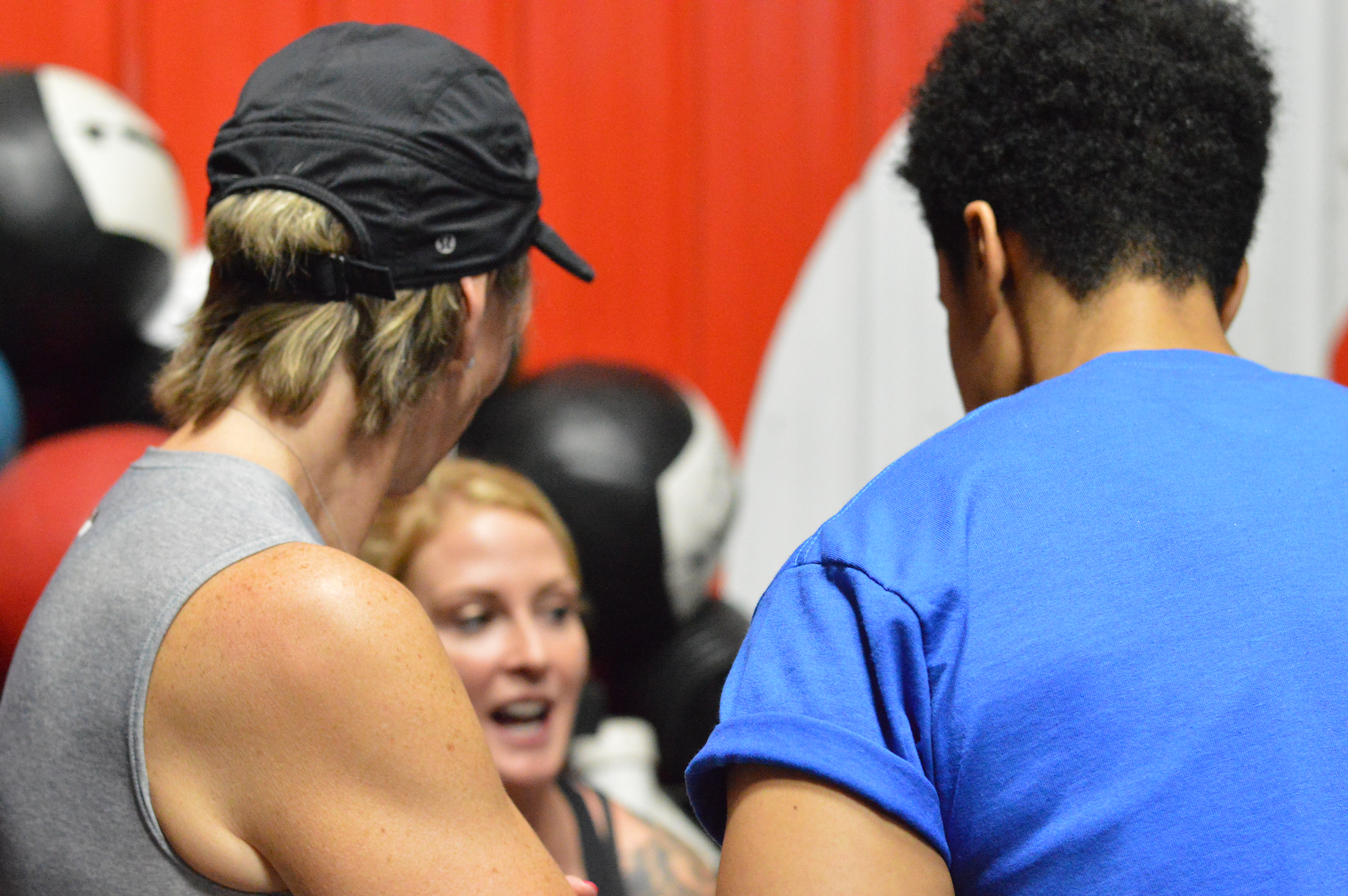
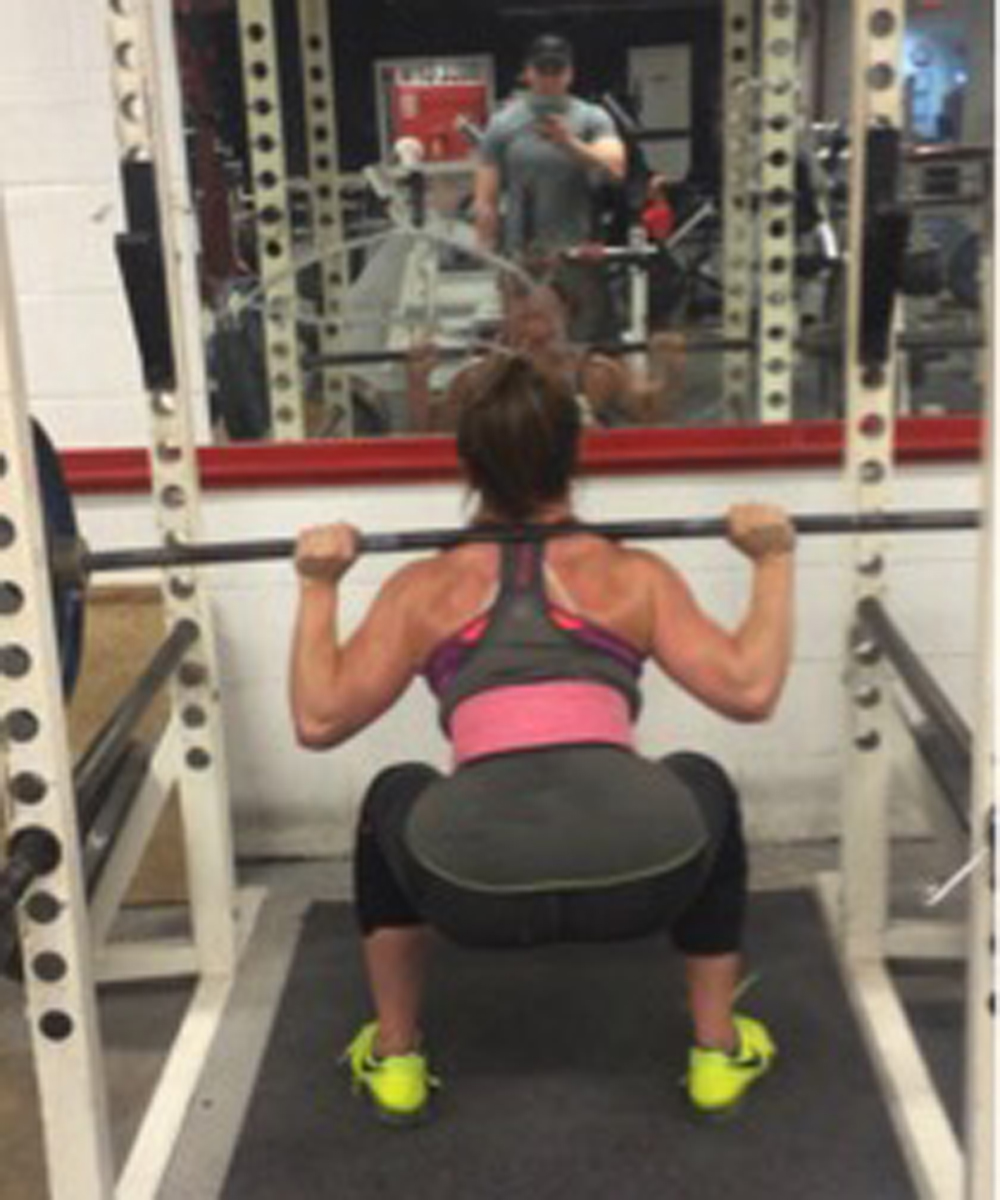
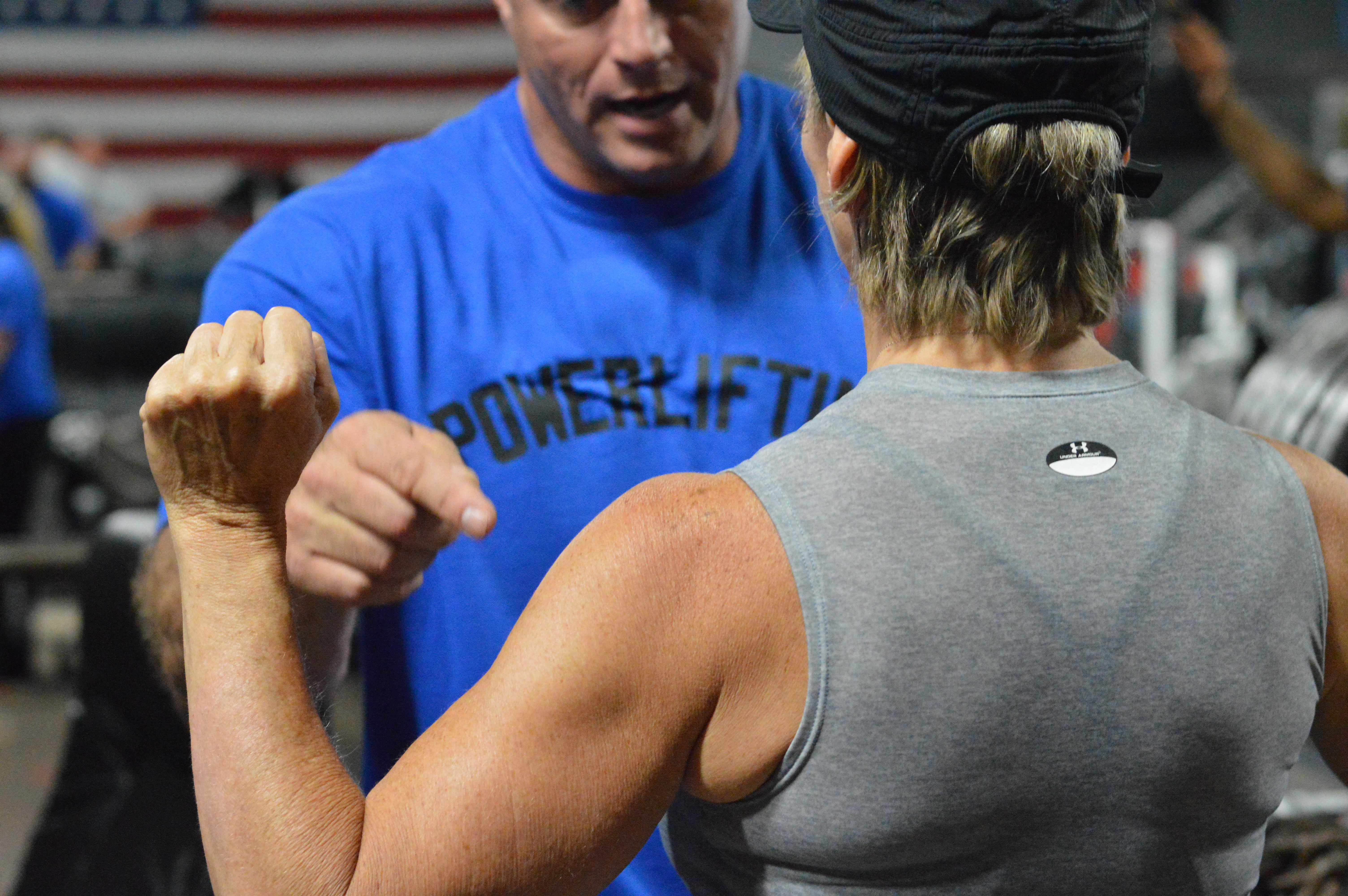
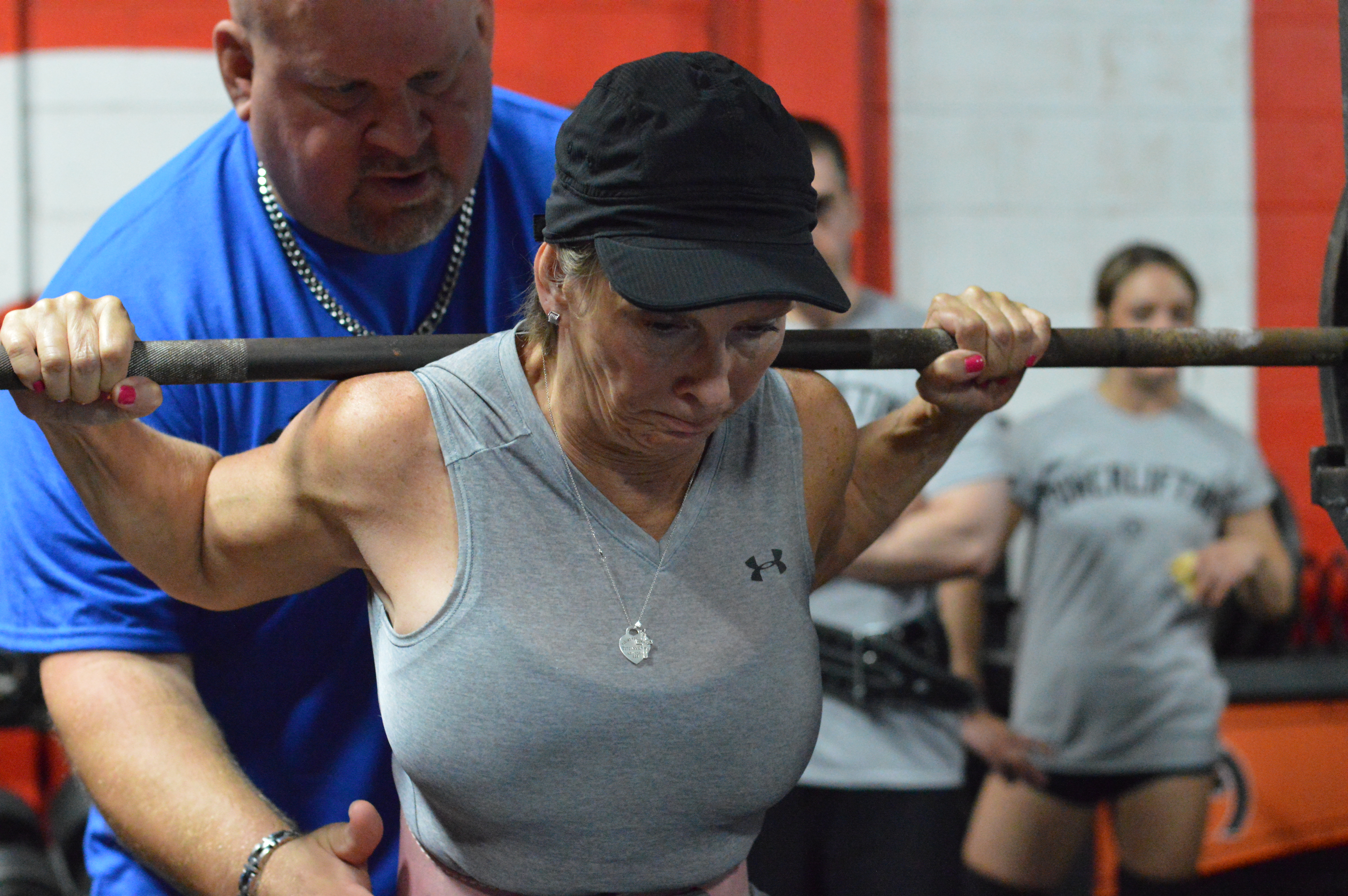
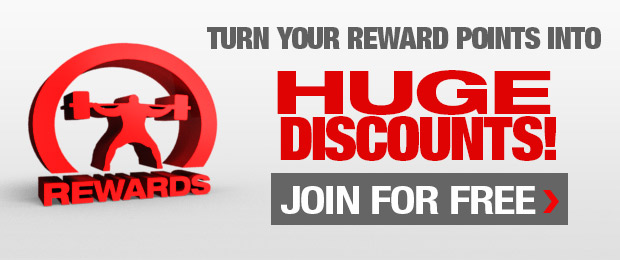
Thanks for reading. I think there are a few things to consider when it comes to the unilateral work. One rep difference between one side and the other isn't anything glaring to me, but it may be worth noting a few things other than the actual rep count itself, including (but not limited to) quality of the work (how does it "look" on one side to the other?), quality of the work under fatigue (once fatigued, does one side hold relatively similar movement, and does the other tend to deviate?), and even asking yourself what you "feel" working can give some indication. It's worth noting "what" happens on one side towards the end of the set versus the other.
I'll use myself as an example. I do side laterals on my right side, and I actaully feel my shoulders, and a little bit of upper trap, working. on my left? upper trap, muscles in my upper arm... really, anything and everything except my shoulders. qualitatively, they look very different once i hit a certain rep range, but not often early on.
Alexander Cortes has been hugely helpful for me, as well. He has a fantastically effective and simple way of addressing certain "imbalance" we may have: do an extra set with good quality on the lagging side. he's a phenomenal brain to pick and has fantastic ways of taking things that have been made overly complicated, and making them very doable and understandable.
I wrote a response that got lost somewhere in the internet, so I'm going to try and re-create it... :)
Generally, something like a small rep difference isn't glaring to me; but there are certain things that may be worth noting moreso than the actual rep count
1) quality of movement- does it look the same? how about at the beginning versus the end of the set? are there certain points in the range of motion that look different?
2) consistency- is it most upper body motions that the left lags behind the right a little bit?
2) what you "feel" working- this is one i think we miss out on a lot. we get caught on "doing"the movement and not really thinking through why or what we're trying to achieve.
I'll use myself as an example. If I do side lateral raises on the right side, say, for a set of 12, I can say with pretty consistent clarity that I feel the muscle work predominantly in my shoulders, and if I go to a certain range of motion, i feel my upper trap working as well unless I cue myself to keep my shoulders down. If i do the same weight on my left side, generally by rep 8, I start to feel everything working except my shoulders. It goes to my trap, my forearm, my upper arm... and I can "finish the set," but the quality is notably different from the right side in terms of level of fatigue, visual quality, and where i'm actually "feeling" the muscle work. Same goes for overhead pressing-- lsat few reps on the left side becomes an ugly combination of back extension, ribs flaring, and combinations of movement; it looks nothing like a "press" when really looked at.
So what to do? I start thinking down about, oh, 12 different roads that could work, because there's been a lot of talk about overcomplicating injury rehab, and I tend to be a little too worried about picking the "perfect" plan, which can be a bit paralyzing. Alexander Cortes has been a phenomenal voice of simplicity and reason in this regard, coming down to a beautifully simple and effective approach.
For those of us that may have some lagging parts, do an extra set of whatever movement it is, with sustained quality, on the lagging side. His ideas have been helpful for me in my own practical application of how to address asymmetries.
Power bodybuilding may be a buzzword nowadays but as I try to repair the damage done by years of doing only the lifts I liked, I'm finding more and more that the key is to develop my body as if someone were going to judge it visually from every angle. No imbalances.
I wish I'd read this article BEFORE taking the survey about my favorite EliteFTS authors.
Thank you for your kind words, that means a lot to hear. It's always a little scary to first get started sharing ideas in a public realm, especially on a personal level.
I do think there's something to be said for powerbuilding-- and the idea of "training like a bodybuilder" has a lot to be said for it. There have been a few interesting articles written about those ideas lately, and I hope to see some of those thoughts continue to enter the realm for discussion so we can continue to grow and learn as a community.
I'm a CSCS who was recently diagnosed with three bulging discs and a case of reverse cervical lordosis.
Is there a way to contact you personally in regards to my current plight?
Additionally, do you currently work at a private practice?
Thank you,
Mark